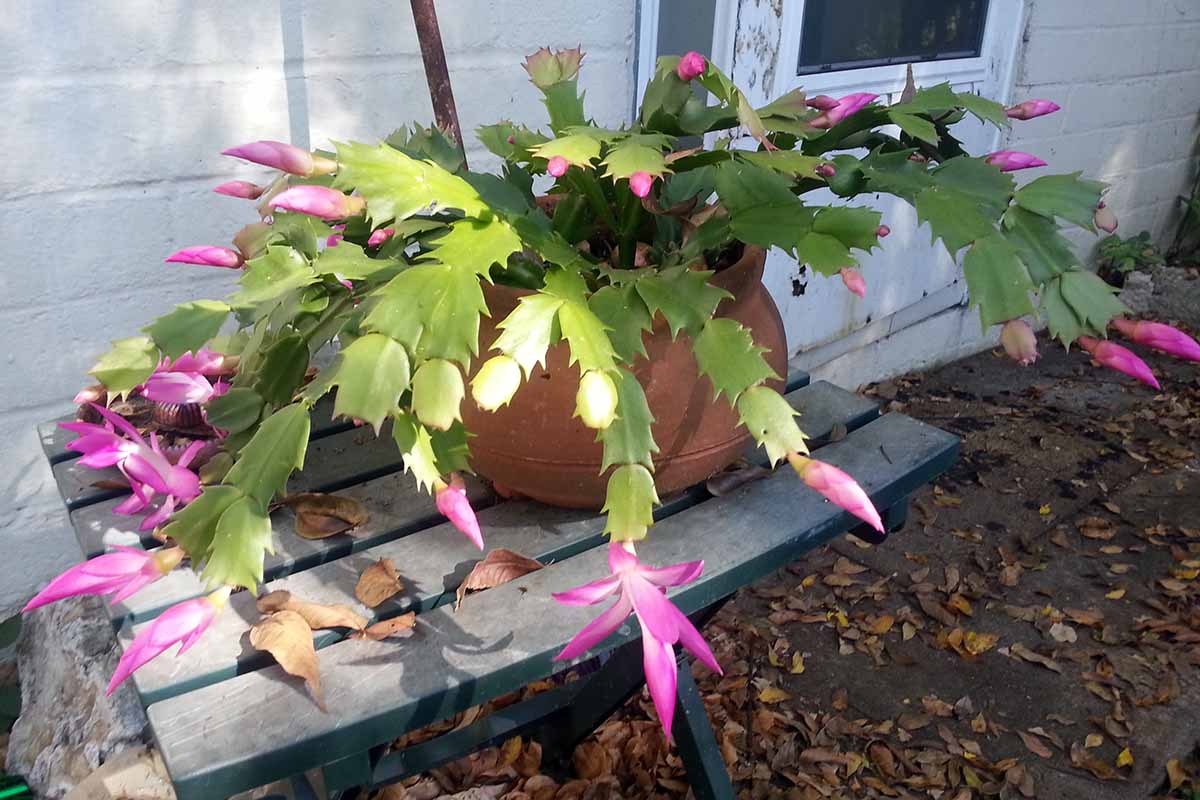Contents
Introduction
As the holiday season approaches, many of us find ourselves drawn to the vibrant, festive blooms of the Christmas Cactus Care. With their segmented stems and dazzling displays of pink, red, white, purple, and orange flowers, it’s little wonder these plants have become a beloved winter tradition. But while they may seem like a low-maintenance option for adding some seasonal cheer to your home, the truth is that the Christmas Cactus plant require a bit of special care to truly thrive. We’ll delve into the specifics of how to keep your Christmas Cactus happy and healthy, covering everything from watering and fertilizing to pruning and propagation.
Understanding Your Christmas Cactus

Before we dive into the nitty-gritty of care, it’s helpful to understand a bit about where your Christmas Cactus comes from. These plants, whose botanical name is Schlumbergera x buckleyi, hail from the lush rainforests of Brazil, where they grow as epiphytes on trees or in rock crevices filled with decaying vegetation. Despite their tropical origins, Christmas Cacti have adapted well to life as potted plants, provided they’re given the right conditions.
The Right Environment
When it comes to creating an environment your Christmas Cactus will love, there are a few key factors to consider. A spot near a sunny window is ideal, but be sure to provide a sheer curtain or shade to prevent scorching. In terms of temperature, Christmas Cacti like it warm but not hot, with an ideal range of 70-80°F (21-27°C) during the growing season. As the days shorten and buds begin to set in the fall, cooler temperatures of 55-65°F (13-18°C) and at least 13 hours of darkness per day will encourage blooming.
Watering Wisely
One of the most common mistakes people make when caring for a Christmas Cactus is overwatering. These plants are succulents and as such, they have a tendency to store water in their stems. For this reason, it’s essential to allow the soil to dry out completely between waterings. Aim to provide enough moisture that a little drains out of the pot’s bottom holes, then let the plant sit for a few minutes to allow excess water to run off.
Feeding Your Plant
When it comes to fertilizing your Christmas Cactus plant caring, a little goes a long way. During the active growing season from spring to early fall, feed your plant monthly with a half-strength, water-soluble fertilizer. Once buds begin to form, you can stop fertilizing until the plant finishes blooming. It’s also a good idea to repot your Christmas Cactus every 3-4 years as it becomes pot-bound, using a slightly larger pot and fresh, well-draining cactus mix.
Pruning for Fullness and Blooms
Pruning is a crucial part of Christmas Cactus care, as it encourages the plant to branch out and become fuller. The best time to prune is in the spring when the plant is actively growing, or immediately after it finishes blooming. To prune, simply twist off segments between the stem sections, or use clean scissors or clippers to remove up to a third of the plant. This will prompt new growth and more blooms in the fall.
Propagation the Easy Way
One of the best things about Christmas Cacti is how easy they are to propagate. The simplest method is through stem cuttings, which can be taken any time from a few months after the plant finishes blooming until early fall. Simply twist off 3-5 segment sections of stem, allow the cut ends to callus over for a few days, then plant them about an inch deep in a pot filled with moistened cactus mix. Keep the soil consistently moist but not waterlogged, and roots should form within a few weeks.

Common Problems and How to Avoid Them
Despite their relatively low-maintenance nature, Christmas Cacti can be susceptible to a few common problems. Overwatering is the most frequent cause of death in these plants, leading to root rot and stem decay. To avoid this, always make sure the soil has dried out completely between waterings, and never let the pot sit in standing water. If you do notice your plant beginning to rot, remove affected segments immediately and adjust your watering schedule.
Pests are another issue to watch out for. Check your plant regularly for signs of mealybugs, spider mites, or scale, and treat promptly if you notice any. Finally, if your Christmas Cactus is failing to bloom, it may be getting too much light or heat, or not enough of the cool, dark period it needs to set buds. Adjust its location accordingly and try providing a bit more neglect from mid-October to mid-November to encourage blooming.
Conclusion
With their beautiful blooms and low-fuss nature, Christmas Cactus make a wonderful addition to any holiday decor. By providing the right care, you can enjoy these plants for years to come, and even share a little green joy with friends and family by propagating new plants. Whether you’re a seasoned gardener or just starting out, the Christmas Cactus is a plant that’s sure to bring a touch of festive cheer to your home.



